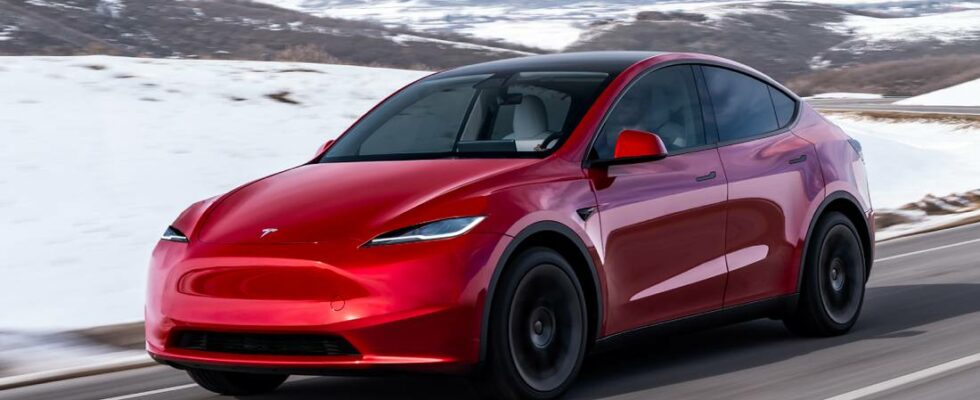Tesla is introducing new technology for automatic parking with the rollout of its enhanced Autopark update, specifically tailored to models without LiDAR sensors.
Elon Musk continues to thumb his nose at his detractors. While the disappearance of ultrasonic sensors has deprived Teslas of an automatic parking function since 2021, a new update which relies on artificial intelligence and Tesla Vision technology allows you to benefit from this function, with even more precision than before.
Tesla Vision: one more step towards autonomous driving
Since eliminating ultrasonic sensors in 2021, Tesla has shifted to an automated parking approach that relies entirely on vision, marking a watershed moment with the introduction of its Autopark update. This advance is part of the “Tesla Vision” initiative, which aims to exclusively use cameras and on-board software for all driving assistance functions. This change allows the brand to address initial criticism regarding the lack of automated parking capabilities in previous versions.
The new Autopark system is just the first step towards an even more sophisticated self-parking solution. References in the code suggest that Tesla plans to integrate this feature into its Full Self-Driving (FSD) beta under the name “Tap to Park”. This development would allow drivers to select a target parking zone and let the vehicle perform the maneuver autonomously, further enhancing the driving experience without human intervention.
Moreover, Tesla has launched a free one-month trial period for its Full Self-Driving autonomous driving feature with eligible owners in the United States. But Tesla communicates cautiously about this functionality, emphasizing that even if FSD allows cars to drive almost autonomously everywhere, it can only do so under the supervision of the driver. Still, the technology is interesting, since it also relies on the Tesla Vision system, and therefore does without LiDAR.
The LiDAR sensor already outdated and replaced by Tesla Vision
Indeed, Elon Musk and Tesla have adopted a distinctive strategy by relying on Tesla Vision, an advanced system that uses cameras rather than LiDAR technology, traditionally used in autonomous vehicles. This decision is motivated by several factors. On the one hand, the relatively high cost of LiDAR sensors is a major barrier to the accessibility and widespread adoption of autonomous driving technology. On the other hand, Elon Musk is convinced of the effectiveness of a perception system that mimics the human ability to visually interpret the road environment, relying on cameras supported by advanced artificial intelligence to process visual data .
Tesla’s approach also simplifies the integration of the system into the vehicle’s design, as cameras can be discreetly incorporated without compromising aesthetics. Additionally, Tesla’s ability to deploy software updates remotely enables continuous improvement of Vision technology, with the ambition to gradually perfect its performance over time through machine learning and the accumulation of large amounts of driving data.
Finally, unlike LiDAR which primarily focuses on measuring distances but can be limited in certain weather or light conditions, Tesla’s computer vision solution is designed to provide a holistic and detailed understanding of the road environment. . For Elon Musk, this holistic view is essential to accurately and safely navigating complex driving scenarios.

Intuitive operation
The revised Autopark system therefore offers a user interface that is supposed to be intuitive, displaying available parking spaces on the vehicle screen so that the driver can choose their preferred location. Once the space has been selected and the vehicle stopped, simply activate the parking sequence by pressing “Start” and release the steering wheel, the system taking over to carry out parking.
Tesla’s commitment to perfecting its Autopark underscores the company’s confidence in its Vision technology and raises the question of how it compares to competing systems that use ultrasonic sensors. However, as mentioned above, questions remain about the effectiveness of this system in unfavorable conditions, such as in bad weather, when the cameras could be obstructed, potentially limiting its usefulness.
Source : You’re here

0